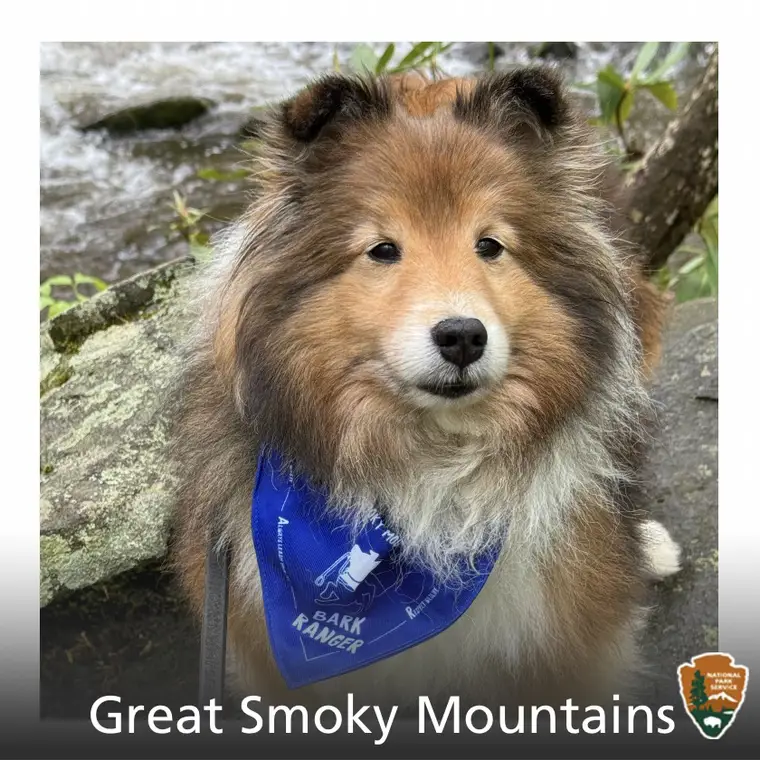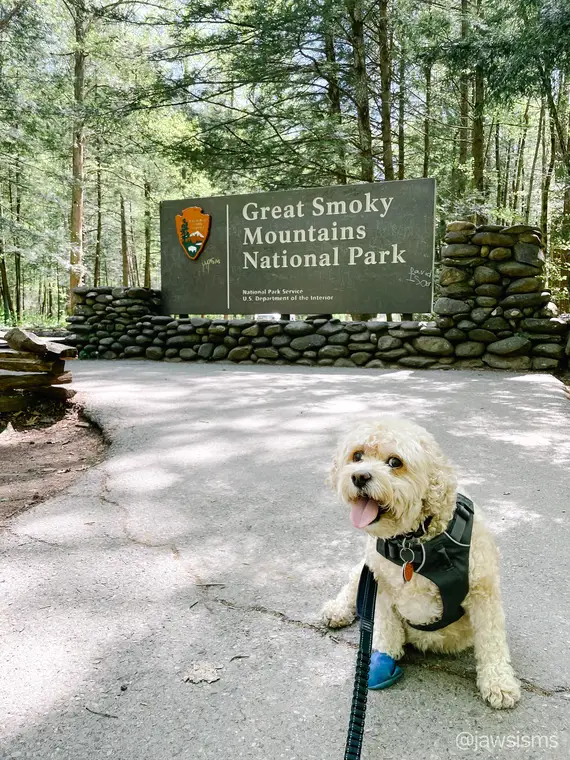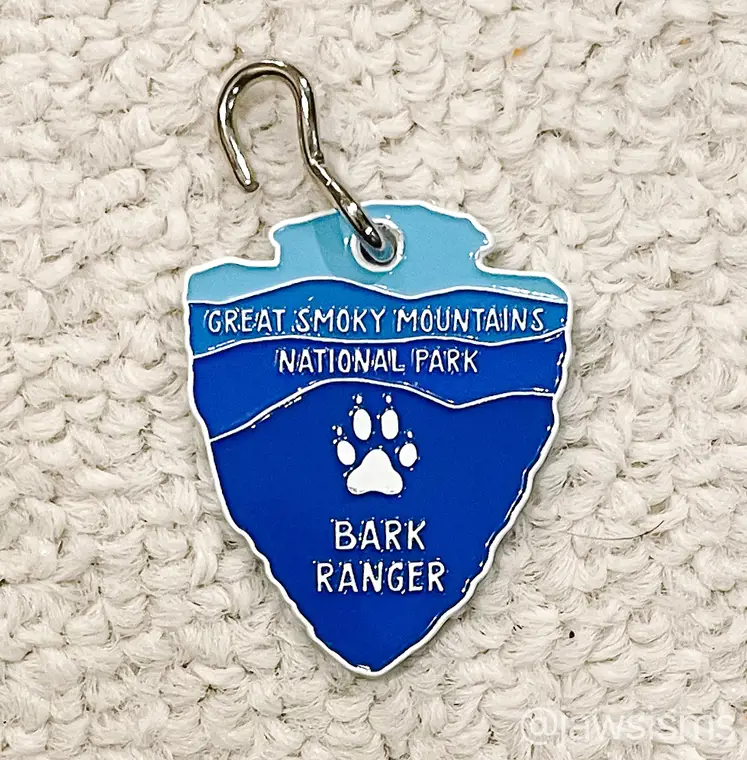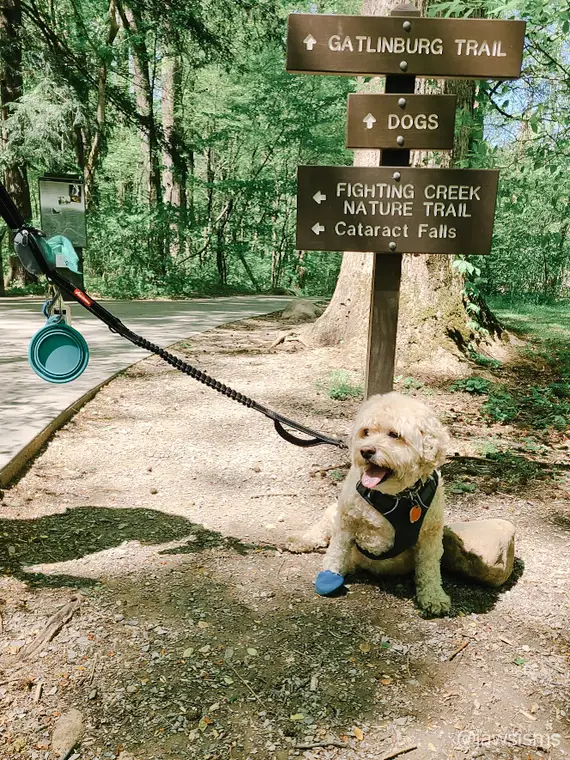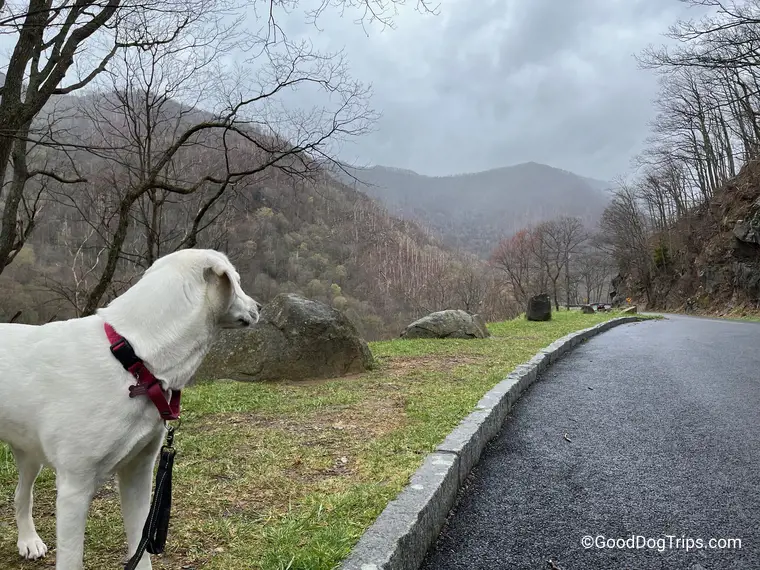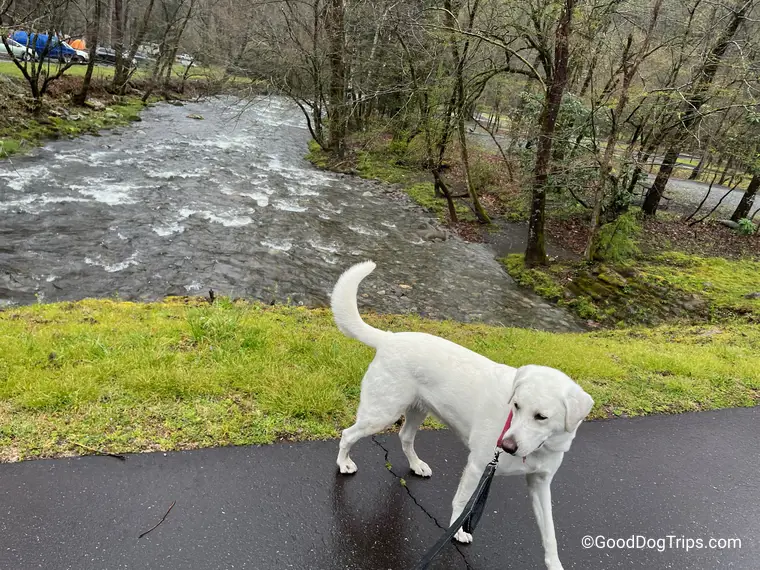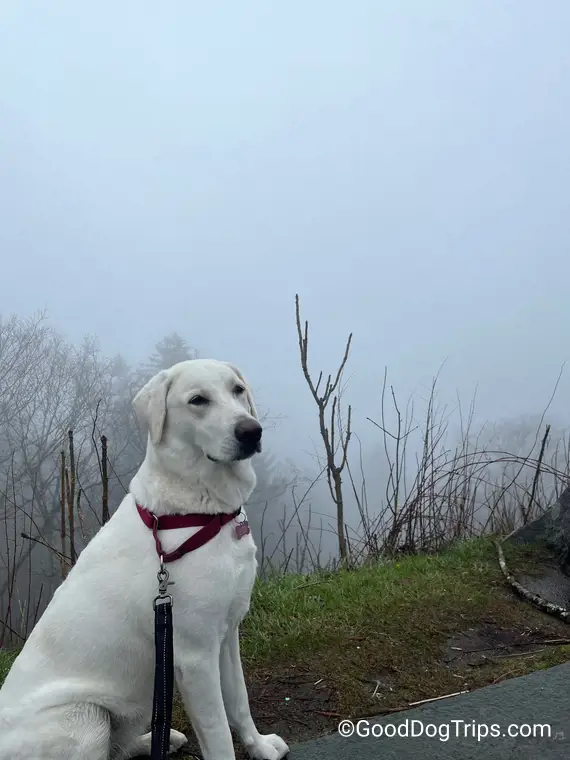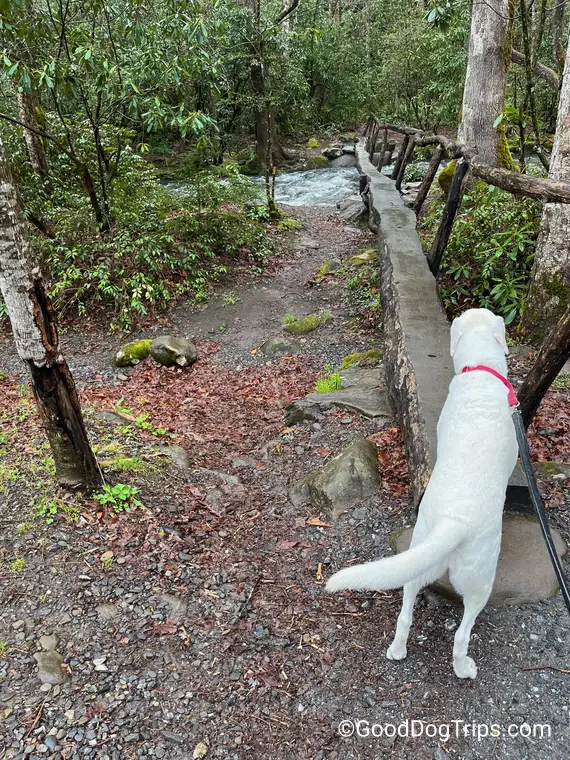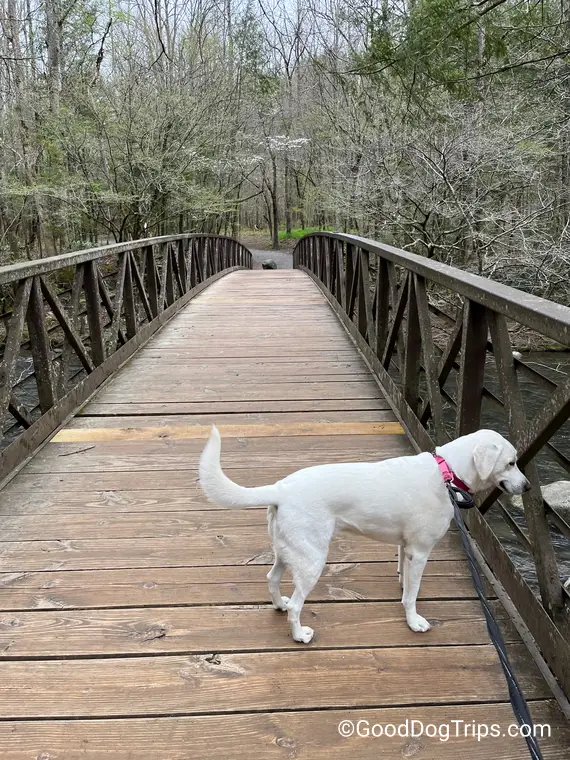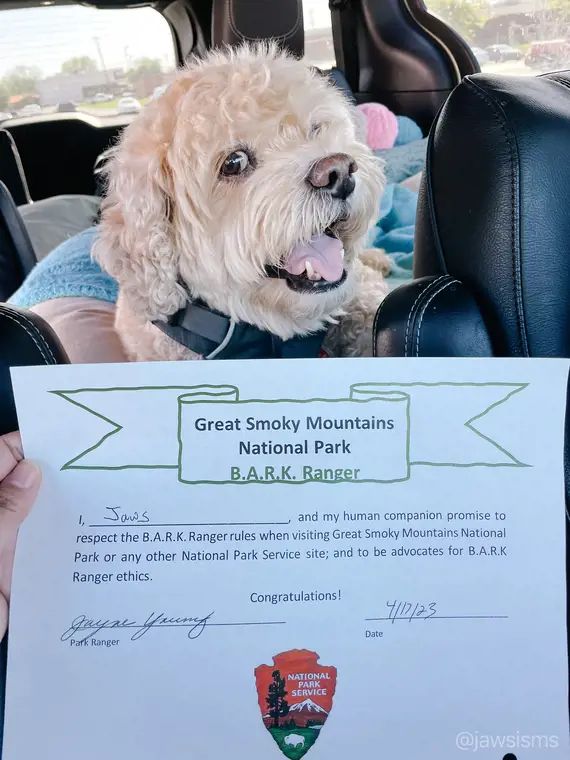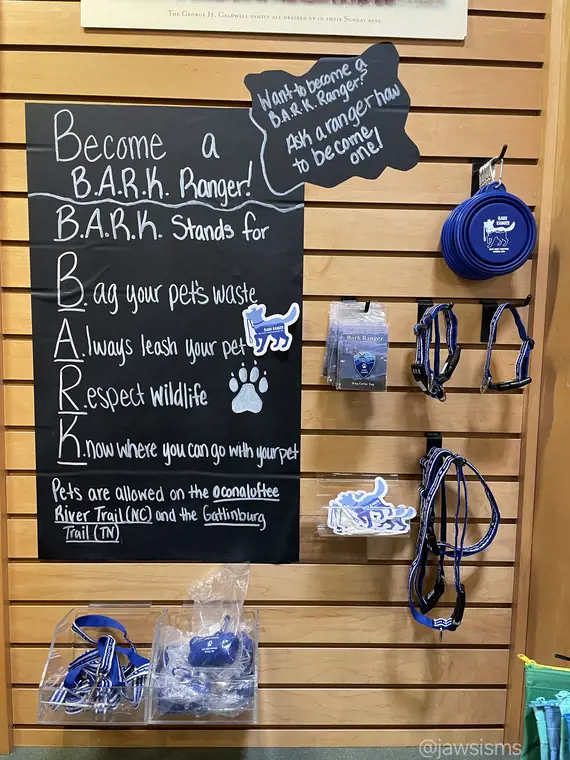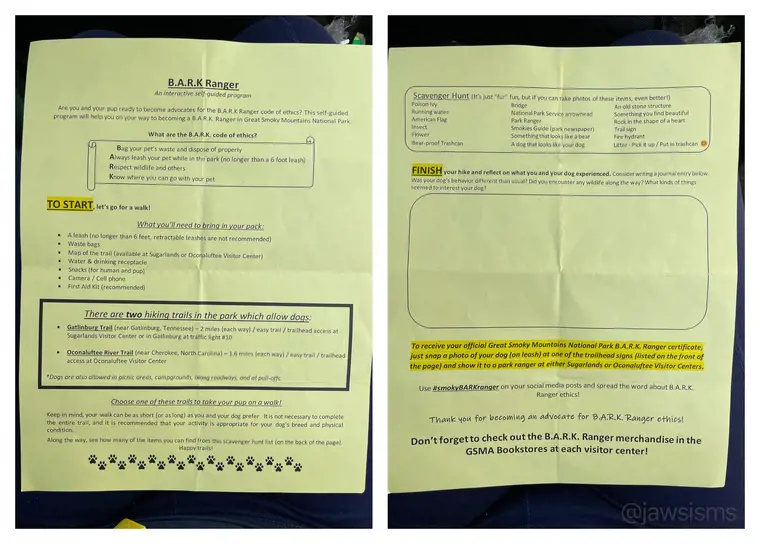Great Smoky Mountains Dog Policy
Great Smoky Mountains National Park is Somewhat Dog Friendly
The Great Smoky Mountains are part of the Appalachian Mountains. The park covers base elevations through rising mountains, and is home to a wide variety of animal and plant species. Hiking is the main attraction here, with more than 800 miles of trails. The Appalachian Trail also runs through the park. Other activities include fishing, horseback riding, and touring historic structures, including recreations of early settlements.
Great Smoky Mountains National Park is somewhat dog friendly, and really barely, since you'll miss out on most of the main attractions here with a dog. Dogs are only allowed on two short trails, and prohibited on most trails. The two short trails are not nearly as nice as the best hiking trails here. However, dogs are allowed at campgrounds and on roads (including overlook parking areas).
Great Smoky Mountains also runs the BARK Ranger Program, where you can earn a special dog tag by learning and following responsible practices (see the BARK Ranger section below). Please note, the BARK ranger swag here (tag, collar, leash, collapsible bowl, sticker) are not free -- they must be purchased.
- Website
- https://www.nps.gov/grsm/index.htm
- Pet Policy Details
- https://www.nps.gov/grsm/planyourvisit/pets.htm
- BARK Ranger
- Yes []
- Area
- 816 mi2
- Annual Visitors
- 12,095,720
Trail Policy
Dogs are not allowed on most trails at Great Smoky Mountains National Park. Dogs are only allowed on two short trails that start at the visitor centers on each side of the park. These trails are nice, but they're not like some of the spectacular trails that are available to hikers alone:
Gatlinburg Trail
1.9 miles each way; relatively flat with great views of the river. There is parking near the border of the park in Gatlinburg, along the entrance road, and at the visitor center. There is a section of the trail near the visitor center that is literally the small shoulder on the side of the road. The rest of the trail is nicer, but that section is around a third of a mile (see the first photo below for what that looks like).
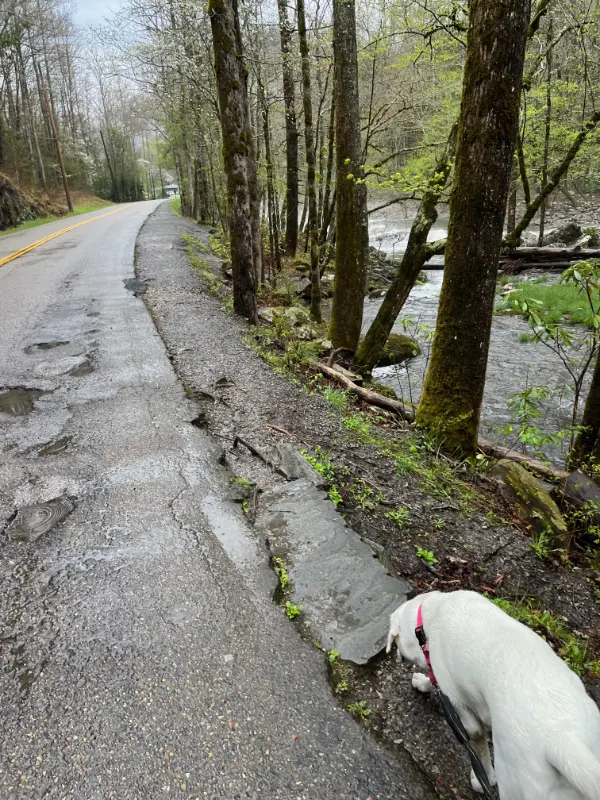
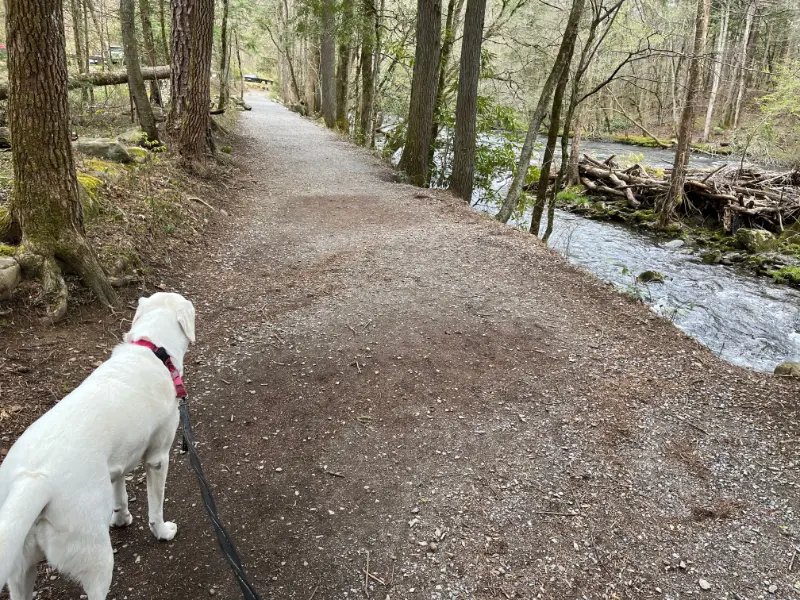
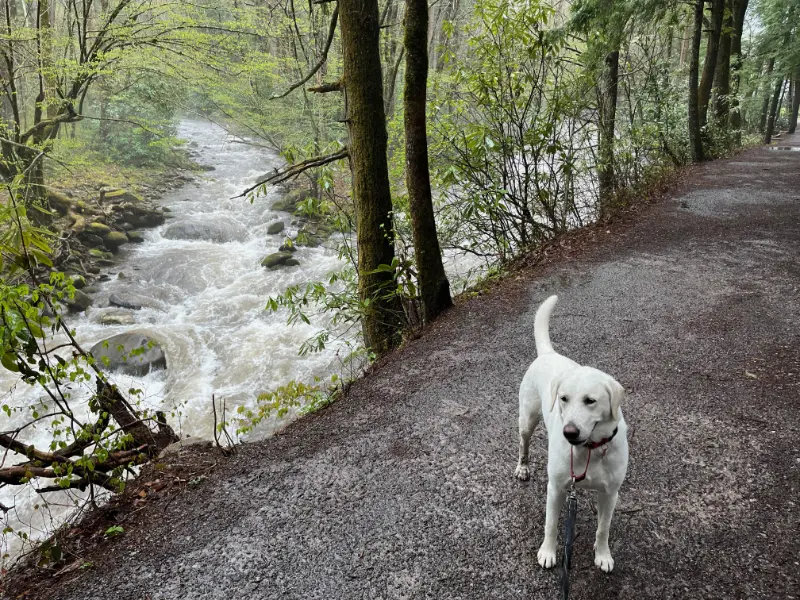
Oconaluftee River Trail
1.5 miles each way; also somewhat flat with views of the river
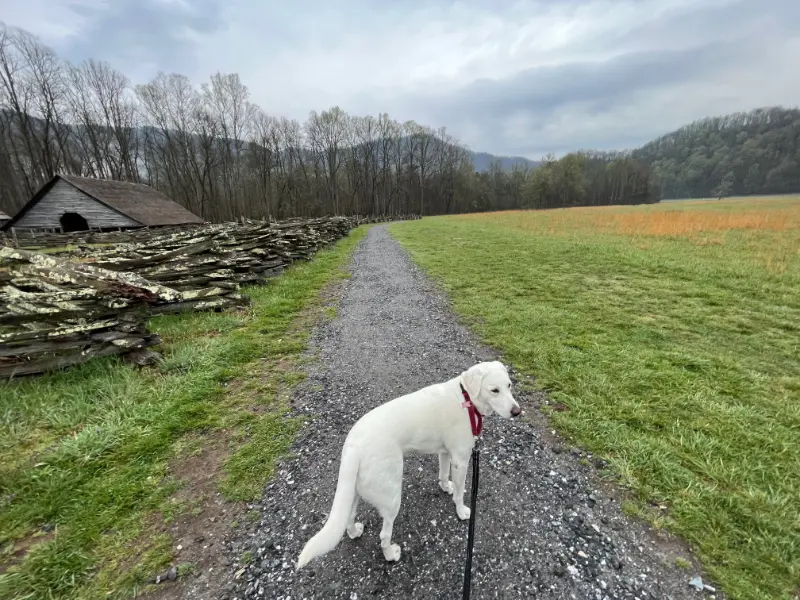
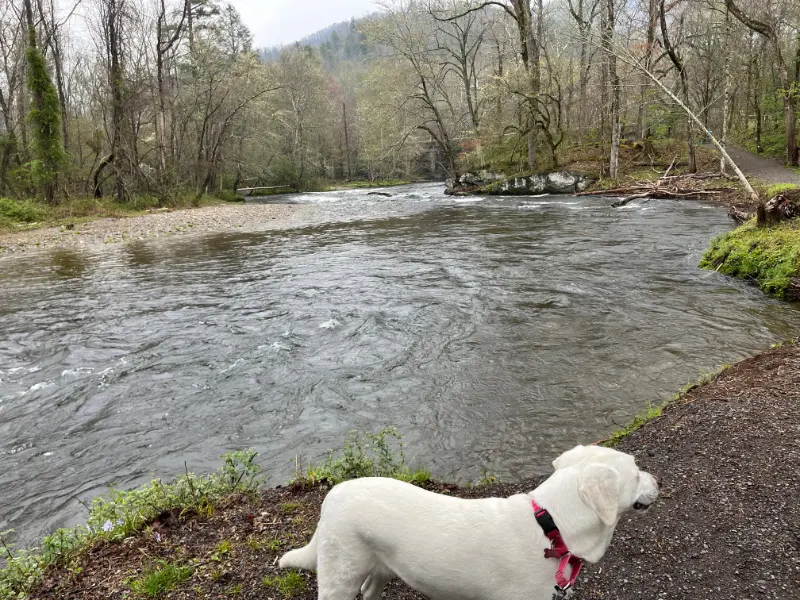
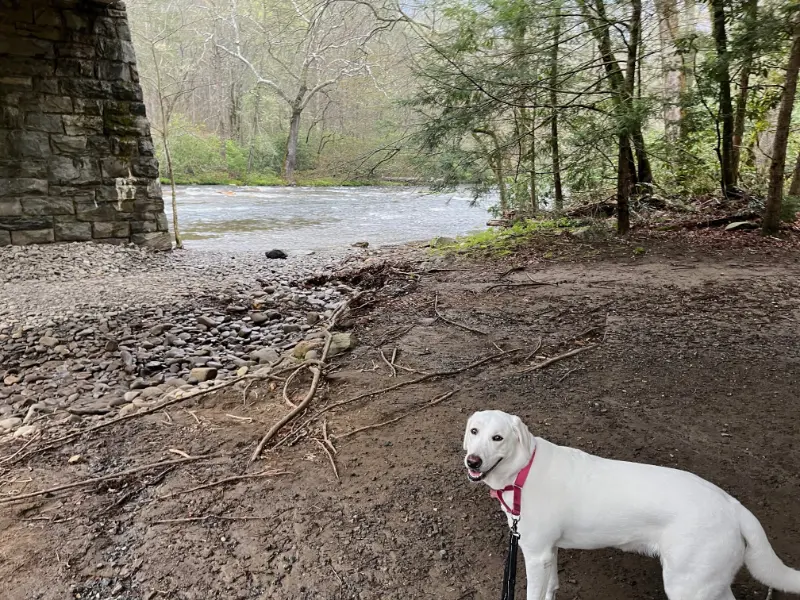
BARK Ranger
Bark Ranger is a really great program that some National Park Service destinations run. The Bark Ranger program teaches dog owners responsible behaviors with their dogs, and in return you get a special dog tag that’s different for each park (note: some parks require you to purchase the tag at the end). You start the program by going to a park office and picking up a checklist. When you complete the checklist (see the link below for more details), you can get your special dog tag.
B.A.R.K. is an acronym for:
- B: Bag your poop
- Help keep the park clean by bagging and picking up your dog poop, and properly disposing of it. Don’t leave your bagged poop on the side of the trail, hanging from branches, or throw it into the woods. Please note dog poop is not a natural fertilizer — it can carry disease that can spread to wildlife or other dogs.
- A: Always wear a leash
- Dogs must be restrained on a leash no longer than 6'. Retractable leashes that extend beyond 6' are not allowed. Not everyone appreciates a dog running up to them, and many people are scared or allergic to dogs — a leash prevents uncomfortable situations between your dog and others. Leashes also help protect your dog from running off if anything spooks them.
- R: Respect wildlife
- Dogs can chase or scare wildlife such as birds and turtles. They can also damage nesting areas. Some parks have wildlife, such as bears, coyotes, or wolves, that can threaten your dog. Please be respectful of wildlife with your dog, and if you do encounter wildlife, keep dog at distance to protect both your dog and the wildlife.
- K: Know where to go
- Know which trails allow dogs, and which don’t. Don’t leave dogs unattended in vehicles while you go off to hike. See the link below for more details.
We also have a list of all parks that run the BARK Ranger program.
Location & Map
Have a photo of your dog here?
Note: Policies can change -- please make sure to check official dog/pet policies prior to making plans or booking travel.
Please tell us if you think there’s anything we should add or change on this page.
